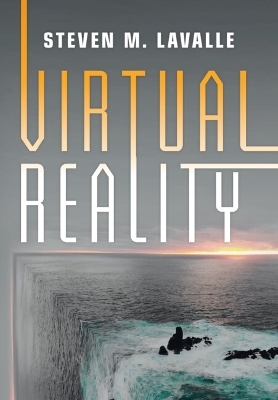
Virtual Reality
Cambridge University Press (Verlag)
978-1-107-19893-7 (ISBN)
Virtual reality (VR) is a powerful technology that promises to transform our lives. This balanced and interdisciplinary text blends the key components from computer graphics, perceptual psychology, human physiology, behavioral science, media studies, human-computer interaction, optical engineering, and sensing and filtering, showing how each contributes to engineering perceptual illusions. Steven LaValle draws on his unique experience as a teacher, researcher, and early founder of Oculus VR, to demonstrate how the best practices and insights from industry are built on fundamental computer science principles. Topics include media history, geometric modeling, optical systems, displays, eyes, ears, low-level perception, neuroscience of vision, graphical rendering, tracking systems, interaction mechanisms, audio, evaluating VR systems, and mitigating side effects. Students, researchers, and developers will gain a clear understanding of timeless foundations and new applications, enabling them to make innovative contributions to this growing field as scientists, engineers, business developers, and content makers.
Steven LaValle is Professor of Computer Science and Engineering at the University of Oulu. He was an early founder and chief scientist of Oculus VR, where he developed patented tracking technology for consumer VR and led a team of perceptual psychologists to provide principled approaches to virtual reality system calibration, health and safety, and the design of comfortable user experiences. He has also served as Vice President and Chief Scientist of VR/AR/MR at Huawei. He has conducted research for over three decades, publishing over 150 articles and two books, Planning Algorithms (2006) and Sensing and Filtering (2012).
Preface; 1. Introduction; 2. Bird's-eye view; 3. The geometry of virtual worlds; 4. Light and optics; 5. The physiology of human vision; 6. Visual perception; 7. Visual rendering; 8. Motion in real and virtual worlds; 9. Tracking; 10. Interaction; 11. Audio; 12. Evaluating VR systems and experiences; 13. Frontiers; References; Index.
| Erscheinungsdatum | 25.01.2024 |
|---|---|
| Zusatzinfo | Worked examples or Exercises |
| Verlagsort | Cambridge |
| Sprache | englisch |
| Maße | 179 x 259 mm |
| Gewicht | 930 g |
| Themenwelt | Informatik ► Grafik / Design ► Digitale Bildverarbeitung |
| Informatik ► Software Entwicklung ► User Interfaces (HCI) | |
| Informatik ► Theorie / Studium ► Künstliche Intelligenz / Robotik | |
| ISBN-10 | 1-107-19893-3 / 1107198933 |
| ISBN-13 | 978-1-107-19893-7 / 9781107198937 |
| Zustand | Neuware |
| Haben Sie eine Frage zum Produkt? |
aus dem Bereich


